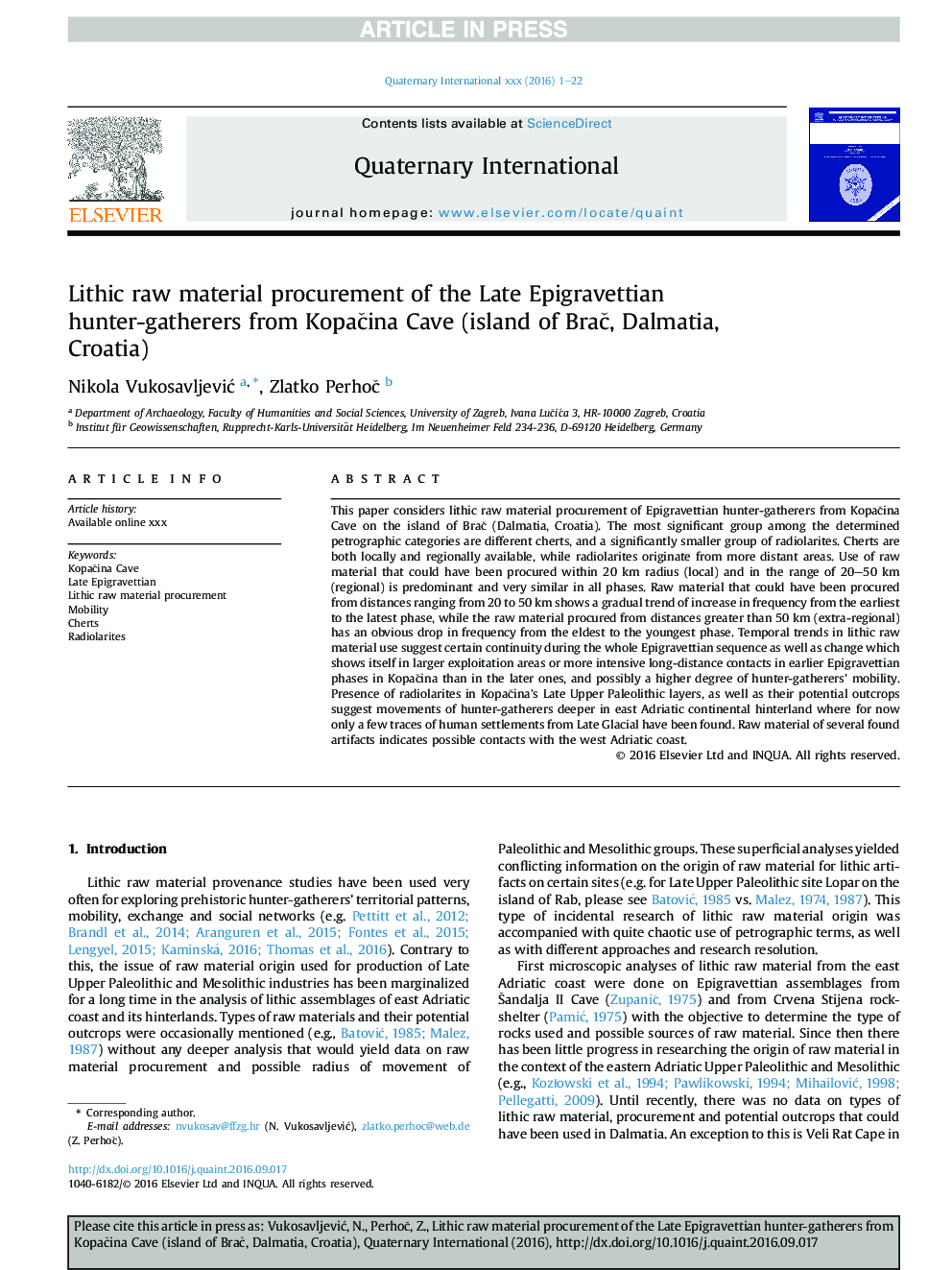| Article ID | Journal | Published Year | Pages | File Type |
|---|---|---|---|---|
| 5113198 | Quaternary International | 2017 | 22 Pages |
Abstract
This paper considers lithic raw material procurement of Epigravettian hunter-gatherers from KopaÄina Cave on the island of BraÄ (Dalmatia, Croatia). The most significant group among the determined petrographic categories are different cherts, and a significantly smaller group of radiolarites. Cherts are both locally and regionally available, while radiolarites originate from more distant areas. Use of raw material that could have been procured within 20Â km radius (local) and in the range of 20-50Â km (regional) is predominant and very similar in all phases. Raw material that could have been procured from distances ranging from 20 to 50Â km shows a gradual trend of increase in frequency from the earliest to the latest phase, while the raw material procured from distances greater than 50Â km (extra-regional) has an obvious drop in frequency from the eldest to the youngest phase. Temporal trends in lithic raw material use suggest certain continuity during the whole Epigravettian sequence as well as change which shows itself in larger exploitation areas or more intensive long-distance contacts in earlier Epigravettian phases in KopaÄina than in the later ones, and possibly a higher degree of hunter-gatherers' mobility. Presence of radiolarites in KopaÄina's Late Upper Paleolithic layers, as well as their potential outcrops suggest movements of hunter-gatherers deeper in east Adriatic continental hinterland where for now only a few traces of human settlements from Late Glacial have been found. Raw material of several found artifacts indicates possible contacts with the west Adriatic coast.
Keywords
Related Topics
Physical Sciences and Engineering
Earth and Planetary Sciences
Geology
Authors
Nikola VukosavljeviÄ, Zlatko PerhoÄ,
